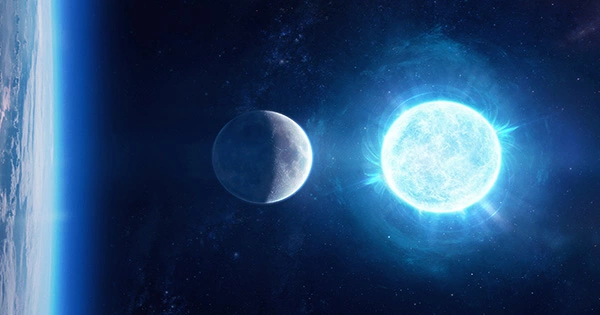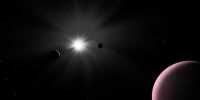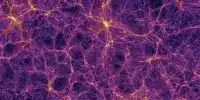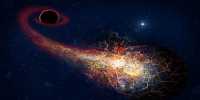High-energy cosmic rays are produced by stellar explosions known as novas, but astronomers have been unclear about how powerful they may be. The maximum has been substantially increased because of observations of the recurrent nova RS Ophiuchi, a rare example of things in nature functioning, as well as simpler models, predict. It might potentially have an impact on the behavior of the more well-known and prominent supernovas. The term “nova” derives from the Latin word “nova,” which means “new star,” because that’s what pre-telescope astronomers thought they were when stars appeared in previously unseen locations. Since then, we’ve learned that the stars in question are old and dim, having outlived their mainstream lives and that we couldn’t see them with our unaided eyes until their brief resurgences.
When material from a normal star collides with a neighboring white dwarf, it ignites a short thermonuclear explosion in the compact star’s outer layers, resulting in a nova. Along with visible light, they emit gamma rays, which, according to a report published in Science, can be quite high in energy. Some novas happen only once and never again, or at random intervals, while others are more consistent. Every 9 to 26 years, RS Ophiuchi bursts. This has prompted us to examine the links between the stars involved, not just so astronomers know to keep a watch on it when it’s due.
In a release, Dr. Alison Mitchell of the High Energy Stereoscopic System (H.E.S.S) Nova program said, “The stars composing the system are at nearly the same distance from each other as the Earth and the Sun.” When high-energy rays collide with the upper atmosphere, H.E.S.S detects the Cherenkov radiation cascade. “The H.E.S.S. telescopes allowed us to see a galactic explosion in very-high-energy gamma rays for the first time when the nova occurred in August 2021,” Mitchell added.
Novas accelerate particles to high energy, just like any other explosion in space, but researchers discovered particles from RS Ophiuchi with energies hundreds of times higher than any previously reported from novas. The most powerful nova-accelerated protons and atomic nuclei, according to theoretical models, would be in the low terra electron volts under perfect conditions — but when are things ever optimal? As a result, astrophysicists predicted lower energies in reality and had only seen evidence of considerably lower-energy particles.
Mitchell and co-authors did, however, discover 1-2.5 TeV particles, implying that RS Ophiuchi is a prototypical particle accelerator, efficiently transferring the energy of the explosion’s shockwave to fast-moving particles. These particles have a similar temporal distribution as gigavolt particles, indicating that the nova is the source. “The discovery that the theoretical particle acceleration limit may be achieved in true cosmic shock waves has significant ramifications for astrophysics,” said Ruslan Konno, a doctorate student at the Deutsches Elektronen-Synchrotron. “It implies that the acceleration mechanism in their far more extreme relatives, supernovae, might be just as efficient.”
Cosmic rays from both within and outside our galaxy bombard the Earth. Although the origins of many of these sources are known, the origins of many cosmic rays are unknown, and this revelation suggests that the contribution of nova may have been overestimated. The most intense cosmic rays, over a thousand times more energetic than those identified by H.E.S.S, were discovered to emanate from star clusters a year ago. The authors credit their accomplishment to the addition of new instruments to Namibia’s H.E.S.S telescopes, as well as early notification of RS Ophiuchi’s current outburst from amateur astronomers.














